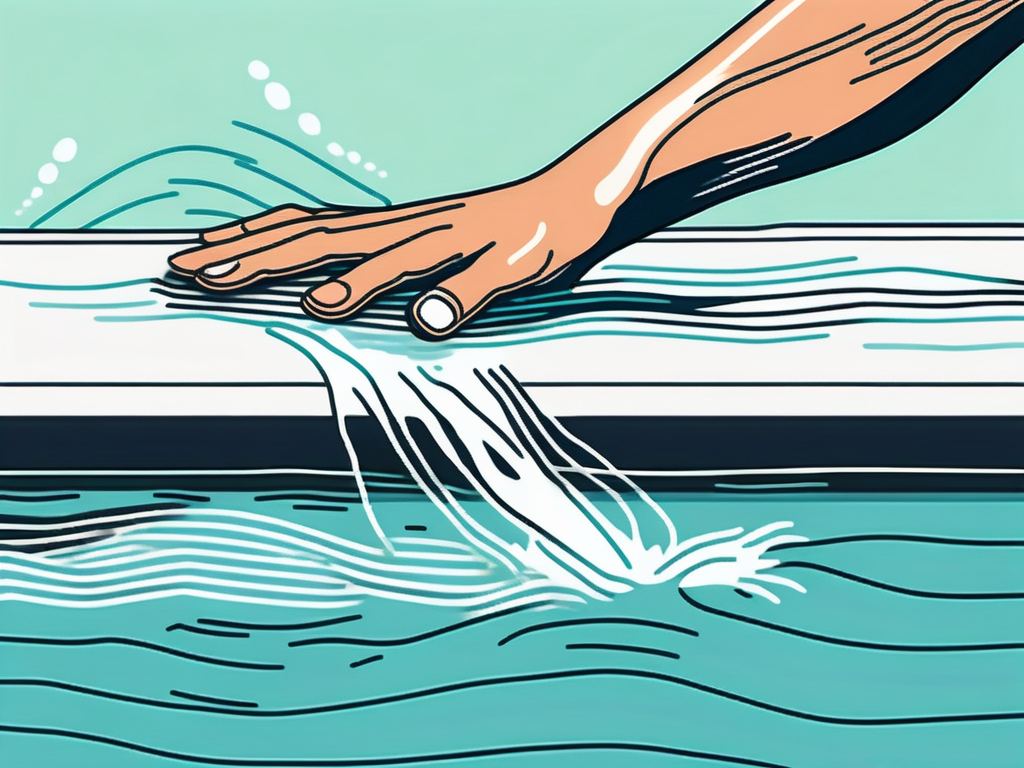Mastering Lane Swimming: 7 Essential Tips
Swimming laps in a pool is not only a great way to stay fit and maintain a healthy lifestyle but also a fantastic way to improve your overall swimming skills. Whether you are a beginner or an experienced swimmer, mastering the art of lane swimming can take your swim sessions to the next level. In this article, we will explore seven essential tips to help you become a master of lane swimming.
Mastering the Art of Swimming Laps
Finding Your Rhythm in the Pool
When it comes to swimming laps, finding your rhythm is crucial. It is essential to establish a consistent and even pace that allows you to maintain your energy throughout the swim. By developing a rhythm, you can conserve energy and swim more efficiently.

One way to find your rhythm is to focus on your breathing pattern. Try to inhale and exhale in a steady rhythm, synchronizing it with your stroke. Experiment with different breathing patterns to find the one that works best for you.
Another important aspect of finding your rhythm is your body position in the water. Maintaining a streamlined position with your body aligned and your hips high helps reduce drag and allows you to move through the water more smoothly. Focus on keeping your head down and your body horizontal to optimize your swimming efficiency.
Perfecting Your Entry into the Water
The entry into the water sets the tone for your entire lap. A smooth and controlled entry not only reduces resistance but also helps maintain your momentum. To perfect your entry, focus on your reach and hand positioning.
As you extend your arm for the entry, make sure your fingers are together and your hand is pointed towards the bottom of the pool. Aim to enter the water fingertips first, allowing your hand to slice through the surface smoothly. This entry technique minimizes the splash and disturbance, enabling you to maintain your speed and glide effortlessly through the water.
In addition to the entry, your body position during the stroke plays a significant role in maintaining momentum. Keep your body aligned and your core engaged to stay streamlined. Avoid excessive movement or unnecessary splashing, as it can slow you down and waste energy.
Enhancing Your Kick Technique
The kick technique plays a vital role in your overall swimming performance. It helps propel you forward while maintaining stability in the water. To enhance your kick technique, focus on leg positioning and hip rotation.
Keep your legs straight and toes pointed during the kick. Engage your core muscles and rotate your hips slightly to generate more power. Practice different kick drills to improve your leg strength and coordination. Additionally, incorporating ankle flexibility exercises into your training routine can further enhance your kick and overall swimming performance.
Remember, mastering the art of swimming laps takes time and practice. By focusing on finding your rhythm, perfecting your entry, and enhancing your kick technique, you can become a more efficient and confident swimmer. So dive in, embrace the challenge, and enjoy the journey of becoming a master in the pool!
Navigating the Pool Like a Pro
The Importance of Rest Intervals in Swimming
Rest intervals are essential for optimizing your lane swimming sessions. Incorporating rest intervals allows your body to recover, preventing muscle fatigue and reducing the risk of injuries. It also helps improve your overall endurance and stamina.

During your swim session, plan regular rest breaks based on your fitness level and goals. Use these intervals to catch your breath, hydrate, and focus on your technique. Gradually increase the distance covered during each swim before taking a rest break.
Furthermore, incorporating rest intervals into your swimming routine can also have mental benefits. Taking a moment to pause and reflect during these breaks can help you stay focused and motivated throughout your session. It allows you to reset mentally, ensuring that you maintain proper form and technique as you continue your laps.
Executing Tumble Turns with Precision
Tumble turns are an effective way to maintain your speed and momentum during lane swimming. Mastering the art of executing tumble turns will save you valuable time and energy. Focus on three key elements: timing, body position, and push off.
Approach the wall with steady strokes and time your flip perfectly. As you approach the wall, tuck your chin into your chest and bring your knees up towards your chest. Push off the wall forcefully with your feet, using the power of your legs to propel you forward.
Moreover, mastering tumble turns not only enhances your swimming efficiency but also adds an element of fun and challenge to your routine. The satisfaction of executing a perfect tumble turn, smoothly transitioning from one lap to the next, can boost your confidence and keep you engaged in your swimming practice.
Staying Safe and Sane in the Swim Lane
Using Common Sense for a Smooth Swim
Swimming in a shared lane requires common sense and consideration for others. Always be aware of your surroundings and the swimmers around you. Avoid sudden changes in direction or speed, signaling your intentions to others when necessary.

Respect the pace and preferences of others in your lane. If you are swimming at a slower pace, stay to the one side to allow faster swimmers to pass. Be mindful of swimmers in adjacent lanes, especially during turns and when passing.
Dealing with Lane Etiquette and Frustrations
Swimming in crowded lanes can occasionally lead to frustration and conflicts. To alleviate any misunderstandings or annoyances, follow proper lane etiquette. Communicate with fellow swimmers, using signals and gestures to indicate your intentions.
If conflicts arise, stay calm and composed. Address the issue politely and seek a resolution that benefits all swimmers. Remember, the pool is a shared space meant for everyone to enjoy, so practicing good sportsmanship is essential.
In addition to these important guidelines, there are a few more tips that can help you make the most out of your swim lane experience. One key aspect to consider is your breathing technique. Proper breathing not only helps you maintain a steady rhythm but also ensures that you have enough oxygen to sustain your swim. Practice exhaling underwater and inhaling when your face is out of the water to optimize your breathing pattern.
Another factor to keep in mind is your body position. Maintaining a streamlined body position reduces drag and allows you to glide through the water more efficiently. Focus on keeping your body aligned and your hips high in the water. Engage your core muscles to stabilize your body and minimize unnecessary movements that can slow you down.
In conclusion, mastering lane swimming is an ongoing journey that requires practice, patience, and attention to detail. By following these essential tips, you can enhance your swimming technique, efficiency, and enjoyment in the pool. Take the time to develop a rhythm, perfect your entry, and work on your kick technique. Additionally, navigate the pool like a pro, incorporating rest intervals and executing tumble turns with precision. Lastly, stay safe and courteous in the swim lane, using common sense and proper lane etiquette. Happy swimming!



















